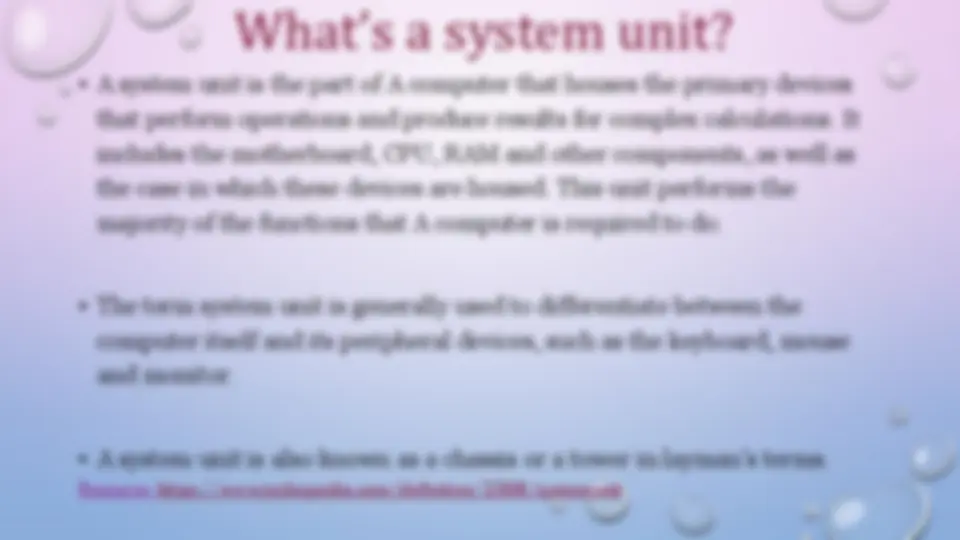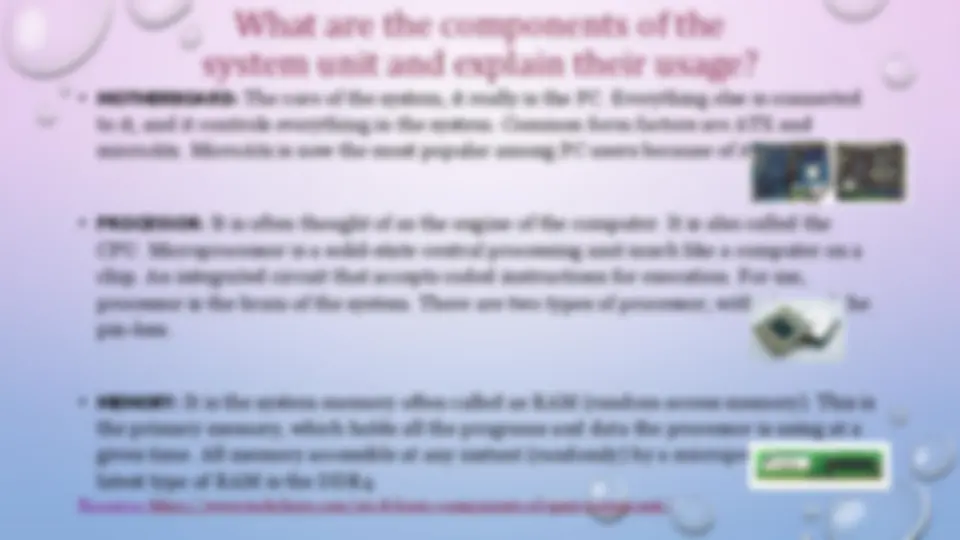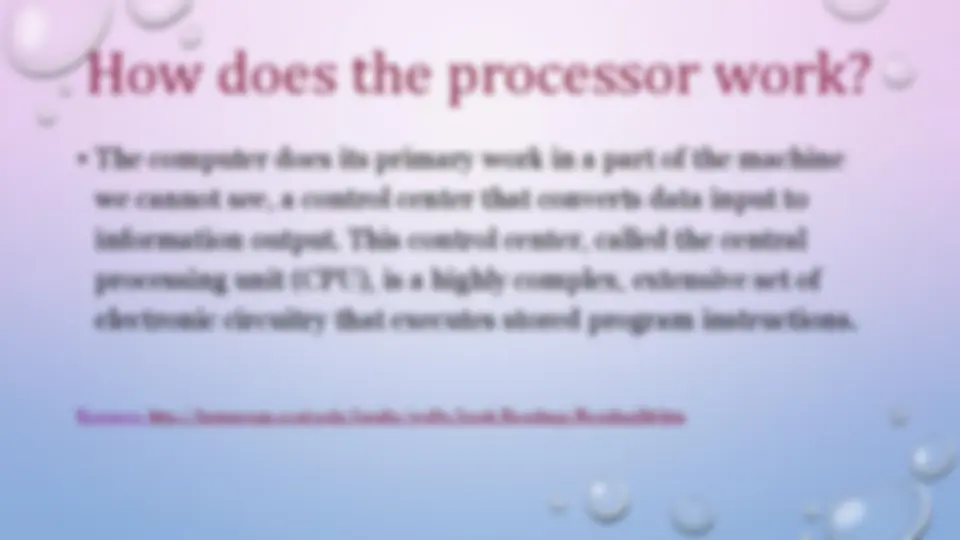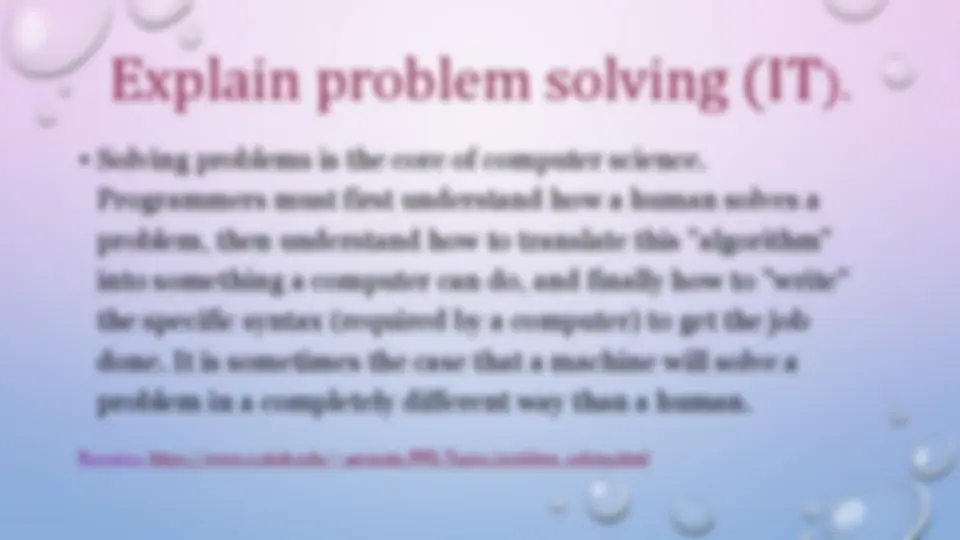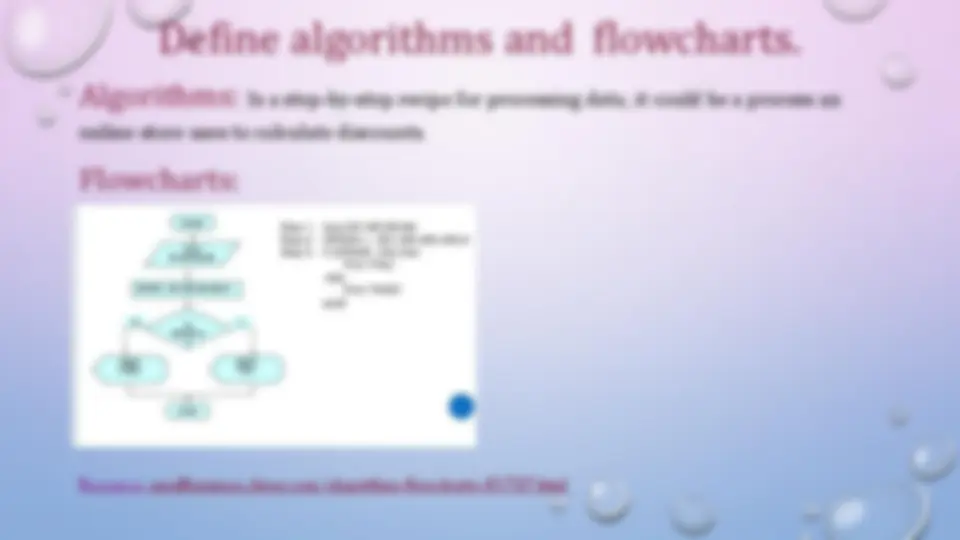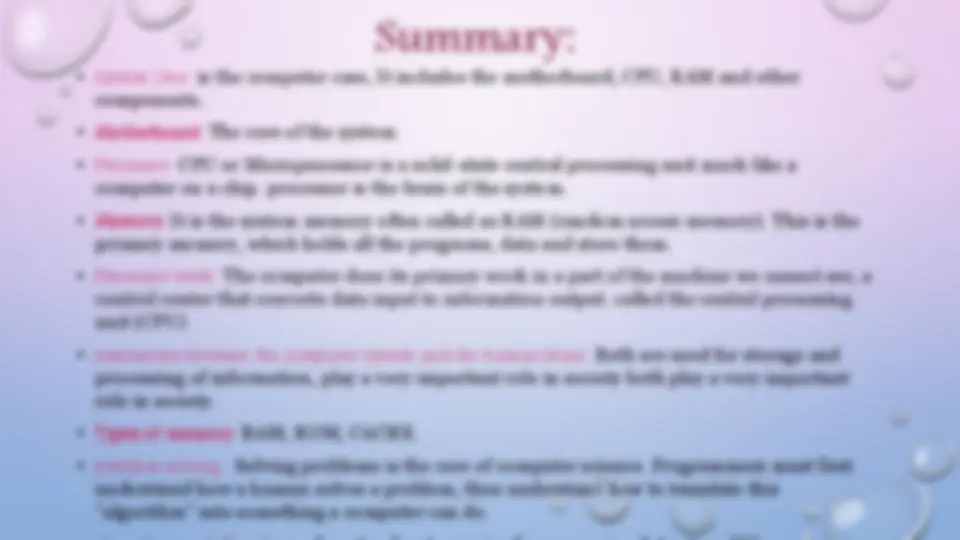Download System Unit and more Slides Computer Science in PDF only on Docsity!
System Unit
By: Khadeeja Farkash
Objectives
- What’s a system unit?
- What are the components of the system unit and explain
their usage?
- How does the processor work?
- What are the similarities between the computer system
and the human brain?
- List the types of the memory.
- Explain problem solving (IT).
What are the components of the system unit and explain their usage?
- MOTHERBOARD: The core of the system, it really is the PC. Everything else is connected
to it, and it controls everything in the system. Common form factors are ATX and
microAtx. MicroAtx is now the most popular among PC users because of its smaller size.
- PROCESSOR: It is often thought of as the engine of the computer. It is also called the
CPU. Microprocessor is a solid-state central processing unit much like a computer on a
chip. An integrated circuit that accepts coded instructions for execution. For me,
processor is the brain of the system. There are two types of processor; with pins and the
pin-less.
- MEMORY: It is the system memory often called as RAM (random access memory). This is
the primary memory, which holds all the programs and data the processor is using at a
given time. All memory accessible at any instant (randomly) by a microprocessor. The
latest type of RAM is the DDR 4.
Resource: https://www.techchore.com/six- 6 - basic-components-of-your-system-unit/
How does the processor work?
- The computer does its primary work in a part of the machine we cannot see, a control center that converts data input to information output. This control center, called the central processing unit (CPU), is a highly complex, extensive set of electronic circuitry that executes stored program instructions. Resource: http://homepage.cs.uri.edu/faculty/wolfe/book/Readings/Reading 04 .htm
List the types of the memory. 1 - PRIMARY MEMORY / VOLATILE MEMORY: RANDOM ACCESS MEMORY (RAM): Ram is a fast temporary type of memory in which programs, applications and data are stored. Which also can do the reading and writing. if a computer loses power, all data stored in its RAM is lost. Categorized: DRAM, SRAM, DRDRAM. 2 - SECONDARY MEMORY / NON VOLATILE MEMORY: READ ONLY MEMORY (ROM) : Rom is memory that cannot be changed by a program or user. ROM retains its memory even after the computer is turned off. For example, ROM stores the instructions for the computer to start up when it is turned on again. Categorized: Programmable read only memory (PROM), Erasable programmable read only memory (EPROM), Electrically erasable programmable read only memory (EEPROM). 3 - CACHE MEMORY: Mina memory less than the access time of CPU so, the performance will decrease through less access time. Speed mismatch will decrease through maintain cache memory. Main memory can store huge amount of data but the cache memory normally kept small and low expensive cost. All types of external media like magnetic disks, magnetic drives and etc. store in cache memory to provide quick access tools to the users. Resource: https://www.informationq.com/computer-memory/
Explain problem solving (IT).
- Solving problems is the core of computer science. Programmers must first understand how a human solves a problem, then understand how to translate this "algorithm" into something a computer can do, and finally how to "write" the specific syntax (required by a computer) to get the job done. It is sometimes the case that a machine will solve a problem in a completely different way than a human. Resource: https://www.cs.utah.edu/~germain/PPS/Topics/problem_solving.html
Summary:
- System Unit: is the computer case, It includes the motherboard, CPU, RAM and other
components..
- Motherboard: The core of the system.
- Processor: CPU or Microprocessor is a solid-state central processing unit much like a
computer on a chip. processor is the brain of the system.
- Memory: It is the system memory often called as RAM (random access memory). This is the
primary memory, which holds all the programs, data and store them.
- Processor work: The computer does its primary work in a part of the machine we cannot see, a
control center that converts data input to information output. called the central processing
unit (CPU)
- similarities between the computer system and the human brain: Both are used for storage and
processing of information, play a very important role in society both play a very important
role in society.
- Types of memory: RAM, ROM, CACHE.
- problem solving : Solving problems is the core of computer science. Programmers must first
understand how a human solves a problem, then understand how to translate this
"algorithm" into something a computer can do.

